Homeward Bound 2016 was for me, quite literally, the trip of a lifetime. It was filled with ocean, snow, ice and the incredible beauty and rawness of nature aboard our real ‘Mother Ship’ – the Earth.
As a geologist having worked in thermal coal for the last fourteen years, I climbed on-board the M.V. Ushuaia on the 2nd December with a huge dose of imposter syndrome, fearing I may be vilified and ostracised by this group of 75+ female climate change activists. The knowledge that a film crew would be present conjured images of ‘Survivor Antarctica’ and the potential for me being voted off the boat even before we’d crossed the Drake Passage. Fortunately, however, I found my companions were all incredibly intelligent, engaging, thoughtful and inclusive. Although occasionally judgemental of the content of the HB program and how it was being run, I was surprised by the other participant’s complete acceptance of the coal geologist in the group. There were no attempts to brainwash or convert, just lots of interesting conversations and profound shared experiences. So my elephant left the room quite early in the trip. Phew.
Getting down to the business of leadership, which was what we were all there for, we tackled some inner demons through deep-diving some personal development assessments. We began individually exploring our purpose and values, learning that values define ‘how’ we operate in the world and purpose drives ‘why’ we do what we do. All this course content straight up-front while at sea in the Drake Passage! (Or Drake Lake as it was referred to by our expedition leader, Greg Mortimer OAM). And after I’d been anticipating a couple of days break after the long-haul trip to Tierra del Fuego, to simply chill-out and deal with my completely irrational fear of boats and sea-sickness! (breathe….) Again, I was fortunate to be able to sweep those elephants under the carpet as well, thanks to Scopolamine patches and the teaspoon of cement I took before venturing out on deck the next morning to observe the vast soullessness of the open ocean.
I felt relief at the first sight of land in the South Shetland Islands on the 4th December, and my ‘rocks got off’ as we drew nearer to the reefs and craggy peaks of COLUMNAR JOINTED BASALTS!! Of early Tertiary age (Eocene?) I’m thinking.
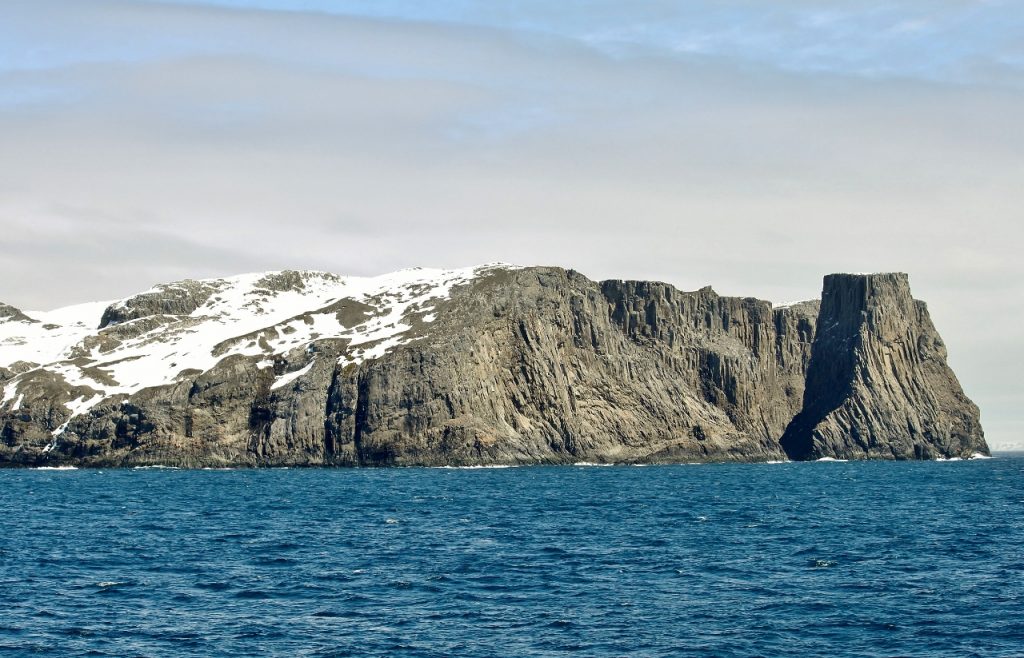
Barrientos Island in the Aitcho Group of the South Shetlands was our first landing. All keen to do the right thing, we donned our life jackets, scrubbed our boots and listened again to our guides regarding the dos and don’ts of wildlife interactions and the general code of conduct for Antarctic tourists. Come on, just get us in the damn zodiacs! We’re itching to get ashore!!
It was such an incredible first landing. Some juvenile Southern Elephant Seals greeted us on the beach with growls, groans and kind-of fart noises that didn’t appear to come from their bums. They lazily rolled and lolled their 400+ kilogram bodies around on the black sand and cobbles, but never progressed far from their ‘patch’ of beach. Gentoo and Chinstrap penguins waddled back and forth on their daily grind finding stones that were just right for their nest and dodging other’s projectile poo as they placed said stones one at a time on the correct nest. Mostly all the creatures just ignored us and carried on as if we were invisible – as long as we did the right thing and kept out of their way. There appeared to be no fear or distress expressed by the birds or seals which I found fascinating given my previous experiences of timid animals in the wild. I presume this has come about from years of dedicated scientists and tourist operators insisting on rules limiting interference, or perhaps it just reflects the deep respect for the creatures that all who visit have developed. I mean, you just couldn’t help but be mindful of their activities and environment – both were simply captivating.
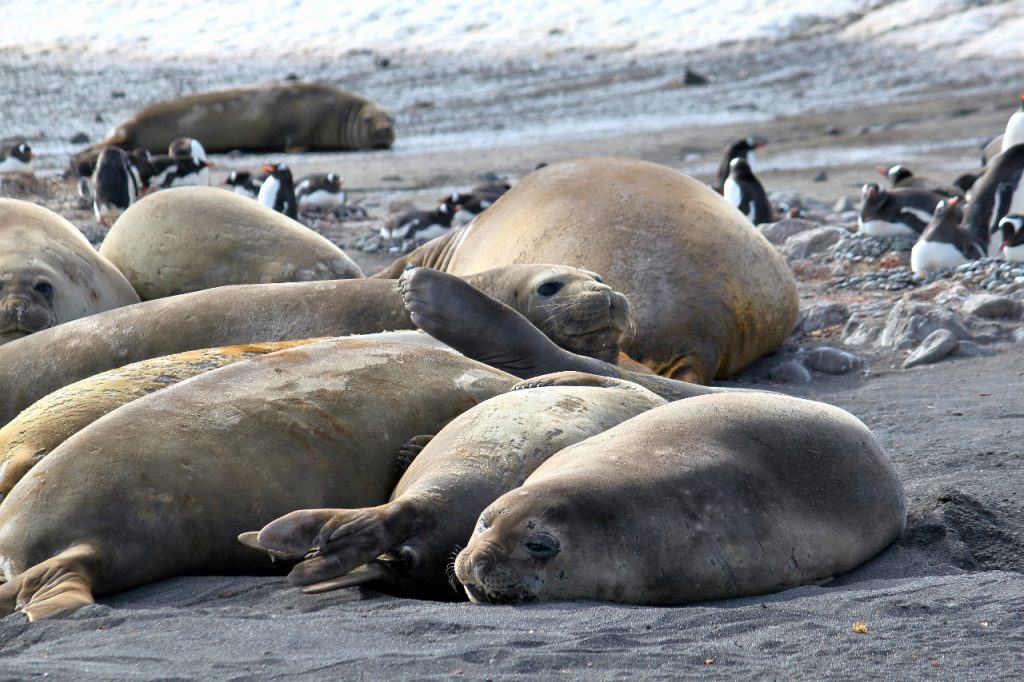
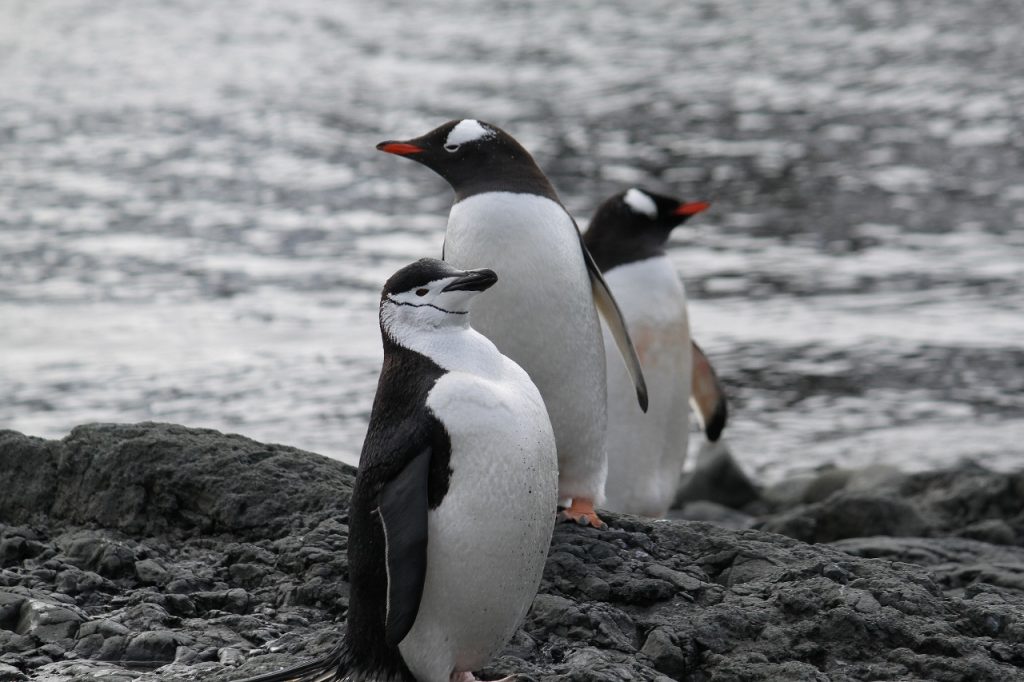
Continuous geological/geomorphological intrigue fed my enthusiasm and energy levels for the first half of the voyage. The second half saw the dreaded lurgy that was being passed around take me out for a couple of days but conveniently I only missed one landing. The further south we went the more ice we encountered which meant our route changed constantly with many places being completely inaccessible.
December 5th saw us land at Half Moon Island, a small, crescent-shaped island at the entrance to Moon Bay, between Greenwich and Livingstone islands – still in the South Shetlands. I partnered with Deb as we strolled along the cobbles of palaeo-beaches in this desperately silent, sweeping, almost monochromatic landscape. We’d been asked to focus our conversation that day on why we each wanted, or chose to lead, and why were we participating in this Homeward Bound journey? From the beginning of the trip we had been encouraged to partner with people of completely different backgrounds, to stretch our social norm ‘comfort zones.’ Deb is a young mum, from France originally, and a keen dancer. Her specialty is in population modelling of Wandering Albatross in the sub-Antarctic islands of the Southern Ocean. So… we certainly rated in terms of difference in life experiences as a pair, but quickly found we operated under similar values and had a shared passion for science communication.
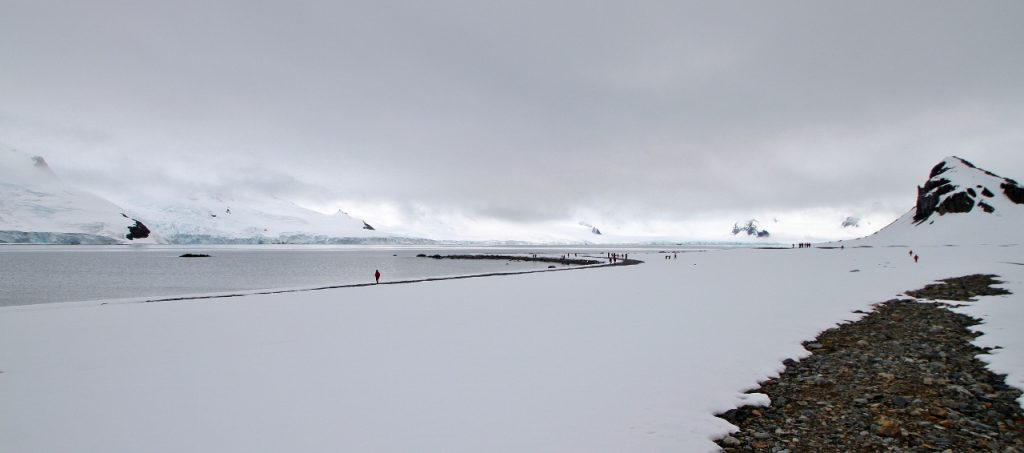
December 6th we visited the Argentine Carlini Station, at Potter Cove on the western end of King George Island. This scientific research base is situated in the shadow of yet another spectacular andesitic volcanic plug, “Tres Hermanos” (Three Brothers Hill).
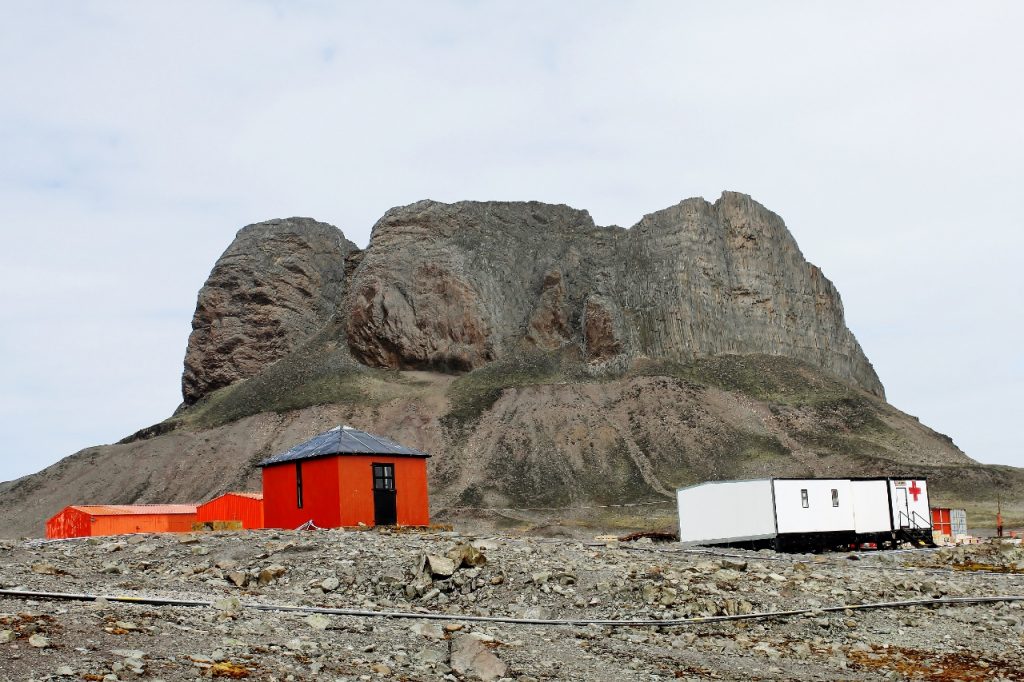
December 7th we landed at Paulet Island. This was only the second-ever time Greg had managed to land a group there in his 30 years of Antarctic expeditions! Paulet Island is a volcanic peak of the Neogene James Ross Island Volcanic Group, rising out of the northern Weddell Sea. It is home to a vast Adélie penguin colony and the remnants of the famous Swedish Nordenskjöld Expedition of 1901-1904.

Our pièce de résistance of geology was discovered on our FIRST CONTINENTAL LANDING at Brown Bluff on the eastern side of the Tabarin Peninsula, December 8th! Although the volcanics towering above the narrow beach apparently belong to the same James Ross Island Group as at Paulet, Brown Bluff represents very young (Pleistocene), sub-glacial volcanism. I was simply in my element on this landing and just couldn’t get enough of the pillows, delta-deposited hyaloclastites and compound sub-aerial tuffs and lava flows.[1] In my excitement and fondling of the rocks I managed to miss out on seeing the only penguin chicks of the whole trip. Bummer.
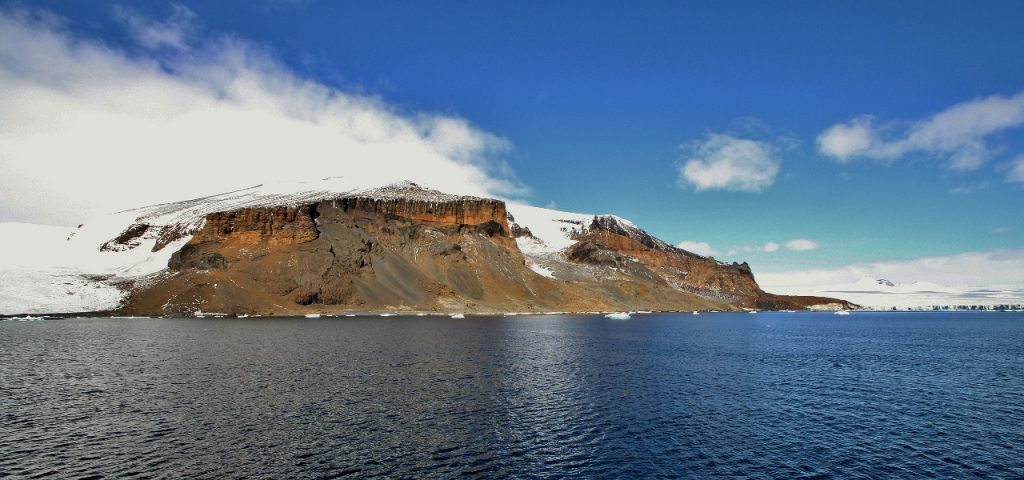
It was at Brown Bluff that I really began to hone my skills as a storyteller and develop an understanding of my ‘deeper purpose.’ Although some of my interpretations of the geological setting were actually incorrect (having since Googled the area), I found that I had developed somewhat of a following of non-rock heads, keen to find out what that crazy rock doctor was on about this time… Visibility expert, Songqiao, captured one such interpretational rant that day on camera, and bemused me by live-translating my discussion into Mandarin. She later streamed the video to social media channels all over China. Great. So now I’m famous in a foreign country for getting the geology wrong! My cover is completely blown as to how often I’m actually winging-it when narrating stories about rock formations. I thought I was pretty safe – ‘when in doubt just make it up!’
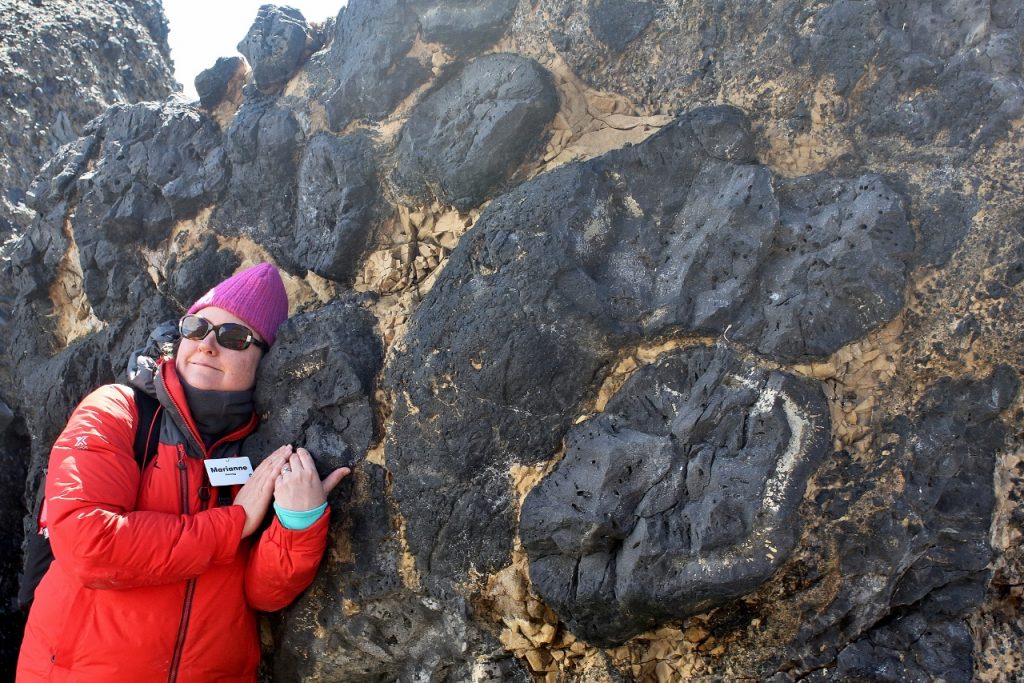
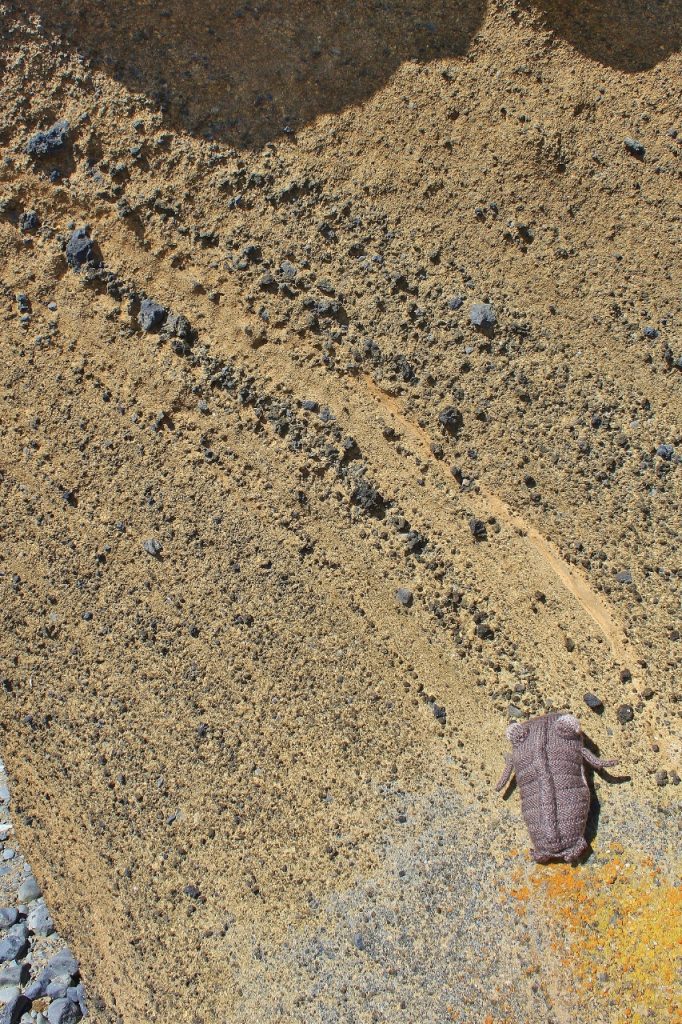
By the 9th of December I was all-set to present my talk for the Symposium at Sea (S@S). The guidance provided to participants for preparing our talks was simply that we each had 3 minutes and one slide to deliver our key message as a leader in our chosen field. Like an elevator pitch to a group of stakeholders. I dumped the two slides which I had prepared before the trip, deciding that both talks were oppositional (my typical behaviour/leadership style) only for the sake of being provocative toward those at the ‘greener’ end of the spectrum than myself and in case of mining industry-bashing. Choosing to go with what I now thought would be a sure winner with the group, I briefly described my life as an exploration and mining geo, and followed on to describe my passion for communicating geological/Earth processes to young children (through my Rocks and Minerals Roadshows). I managed to cover all learning styles we had studied in the structure of my talk and aimed for plenty of humanistic and self-actualising delivery styles.
With the help of faculty member, Jules, using a simple tool she had taught us for purpose elicitation, we managed to determine my deeper purpose in wanting to communicate about geoscience is to educate and entertain – to encourage others to decrease our impact on the Earth’s natural processes. Put simply: to leave nature alone to continue its own journey. From this exercise, my key message for my S@S talk fell out all over the place in front of me. Having felt like I was stumbling over what I wanted to say for weeks, I simply stood up and nailed it:
“My purpose is to educate and entertain. I want everyone to enjoy the stories the rocks have to tell. They can’t speak for themselves, so we have to interpret for them. They tell us about natural process the Earth has undergone way, way before humans ever touched it. But why is knowing about these processes so important? So we can learn to interfere less. No other species on Earth has left an unnatural footprint behind like we will from the artificial world we have created.”
Upon reflection, my primary reason to participate in the Homeward Bound initiative as stated in TAG September 2016, was to develop my communication skills…. I’m thinking I scored a big tick there 🙂
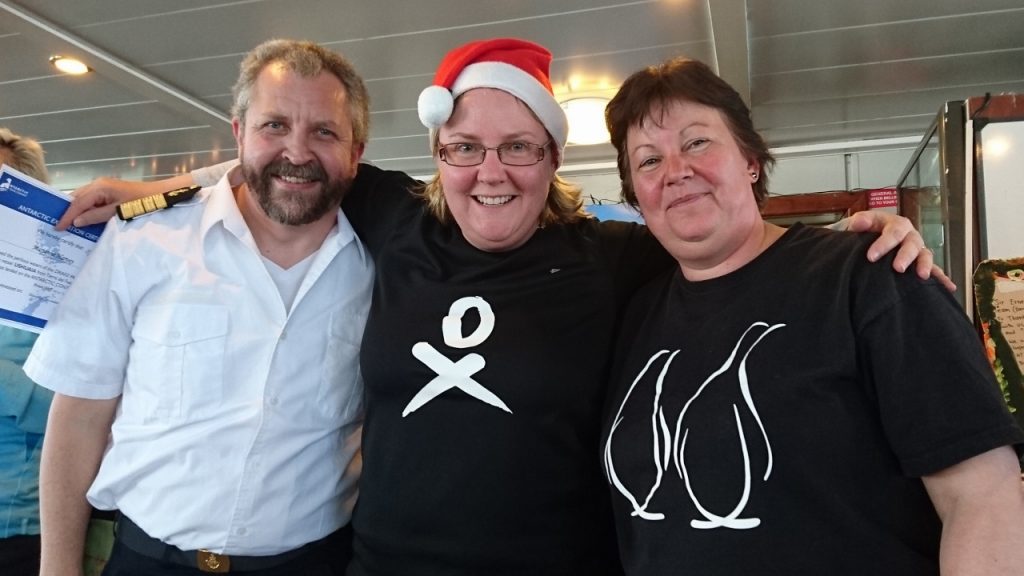
Marianne Harvey – Director & Principal, M.E.G.M.S.
Acknowledgements:
I would like to thank all my supporters who generously donated to my crowd-funding to participate in this program. To all the HB16 Faculty: Fabian, Jules, Kit, Marshall, Songqaio, Mary-Anne and Justine – you all seriously ROCK. Greg, Monika, Captain Wichmann, M.V. Ushuaia crew and staff, your knowledge, skill, and the cheerful patience with which you dealt with us all was inspirational. All my love to my triad sisters Monica A and Joanna Y, and a big hug to my fellow coaly, even though she’s an engineer, Jen.
[1] Skilling, I.P. (1994) Evolution of an englacial volcano: Brown Bluff, Antarctica. Bull Volcanol 56:573.